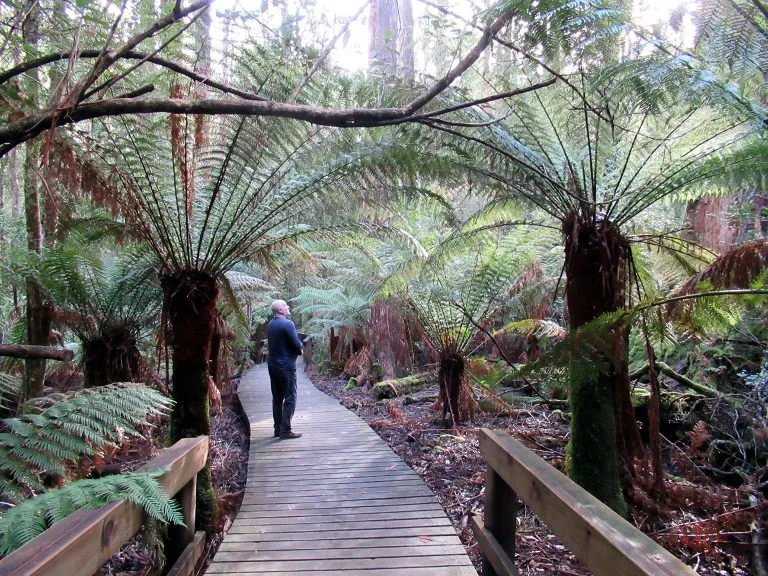
What looks like a trunk on the fern trees is actually roots. It is absolutely magical to walk among them through this temperate rainforest reserve.
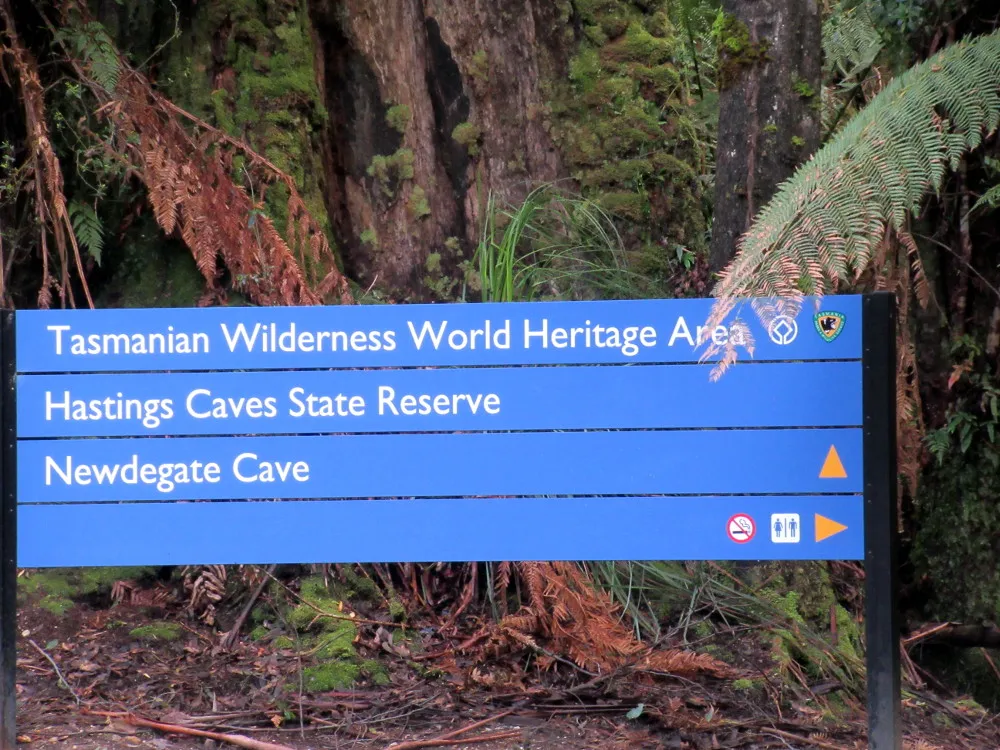
Located in the far south of Tasmania's beautiful Huon Valley, and only a 90 minute drive south from Hobart, is Hastings Cave State Reserve. It's another pristine reserve and part of the Tasmanian Wilderness World Heritage Area.
The reserve contains a complex of caves and thermal springs including Newdegate Cave which is open to the public. What wasn't open this trip, due to Covid-19, was the swimming pool, 28 C (82.4°F) and fed by mineral-rich thermal springs. For the same reason, there were only two of us on the cave tour.
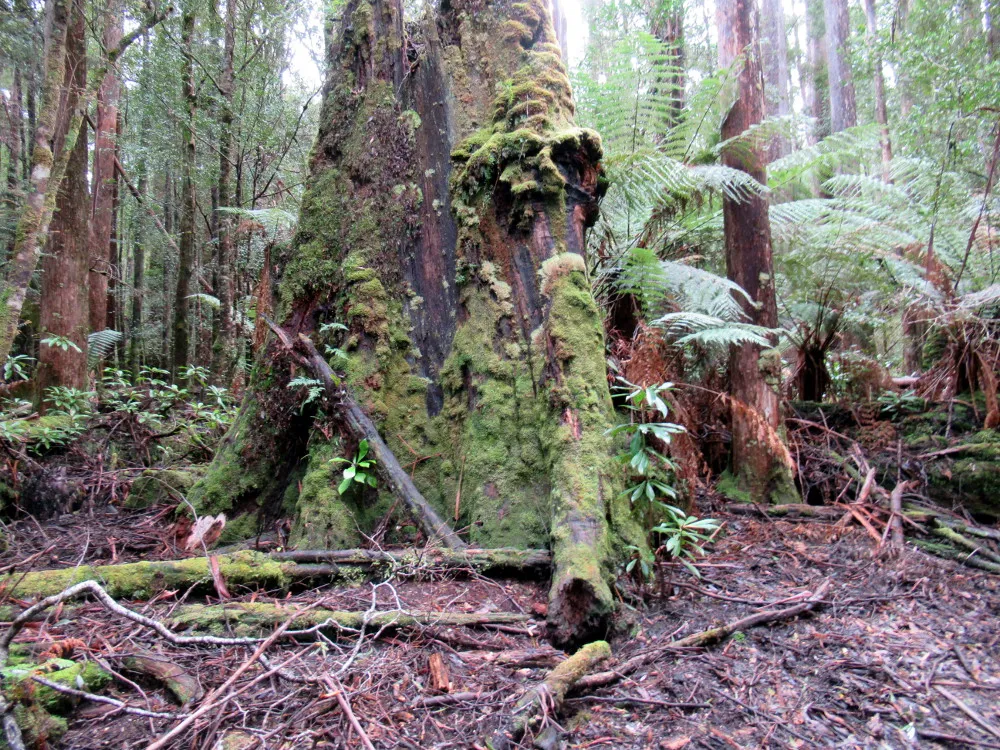
You may visit the cave only on a guided tour led by a Parks and Wildlife Service guide, but first we have a 5 minute walk through a beautiful fern glade to get there.

Tasmania depends on tourism and once again I found the facilities to be top notch. A raised wooden walkway winds its way to the cave and keeps visitors from straying on the ecologically sensitive terrain.
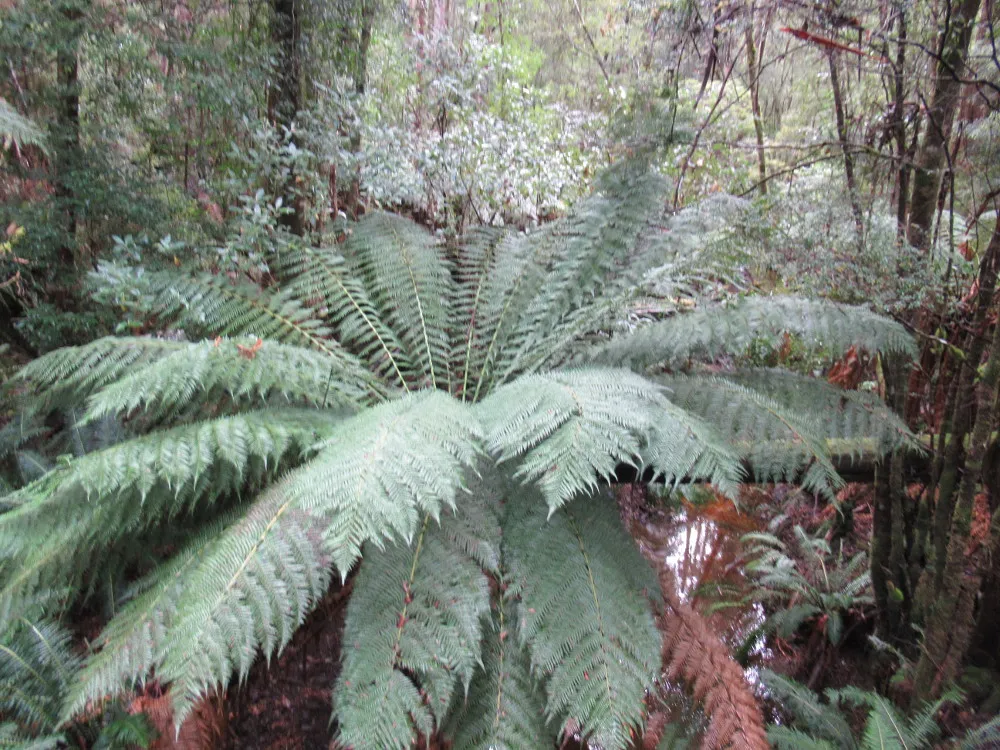
Above, a tree fern, the so-called 'man fern' or Dicksonia antarctica. If you have been following my trip, you have seen these before.
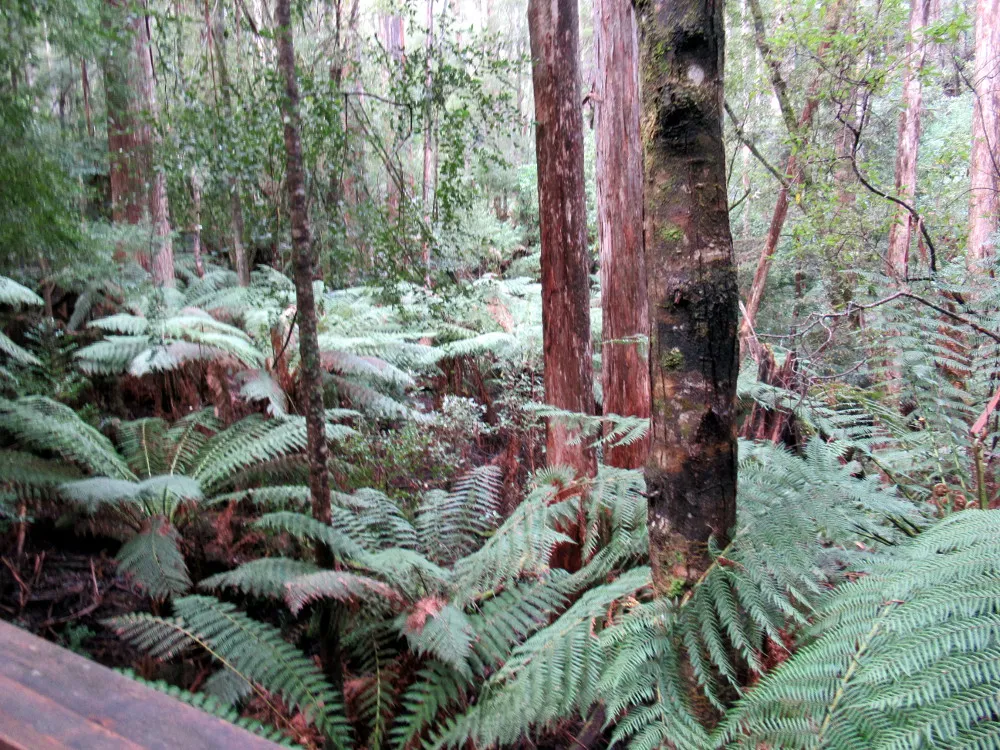
There are hundreds of them and you will see some tall ones.
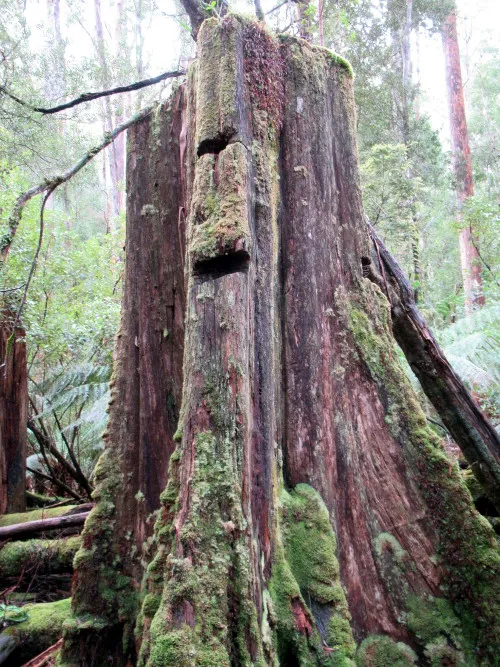
Above, not only can you see the size of tree they were harvesting, but on this stump are the first notches used to hold the planks or "shoes" the tree fellers stood on to start cutting. In those days, it was all done manually with cross saws and axes.

It is a beautiful and peaceful walk through the Eucalyptus.

Just 5 minutes from the parking lot to the cave. Here is another stand-off gorgeous tree ferns.
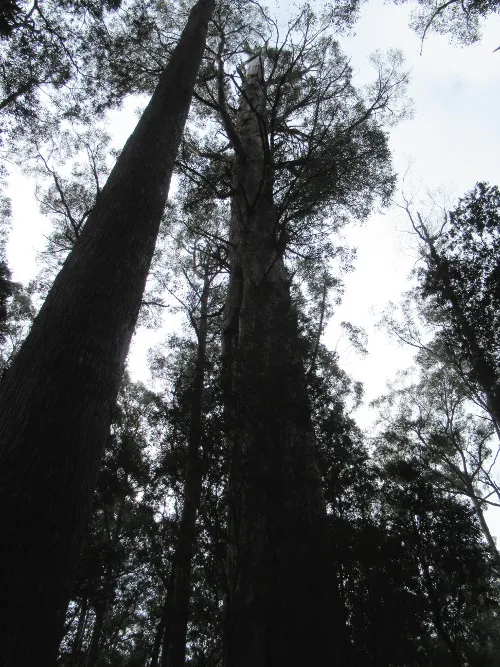
These trees were too young when logging was last allowed in this area but you can see why they were valuable. The trees are almost perfectly straight and they are hardwood.
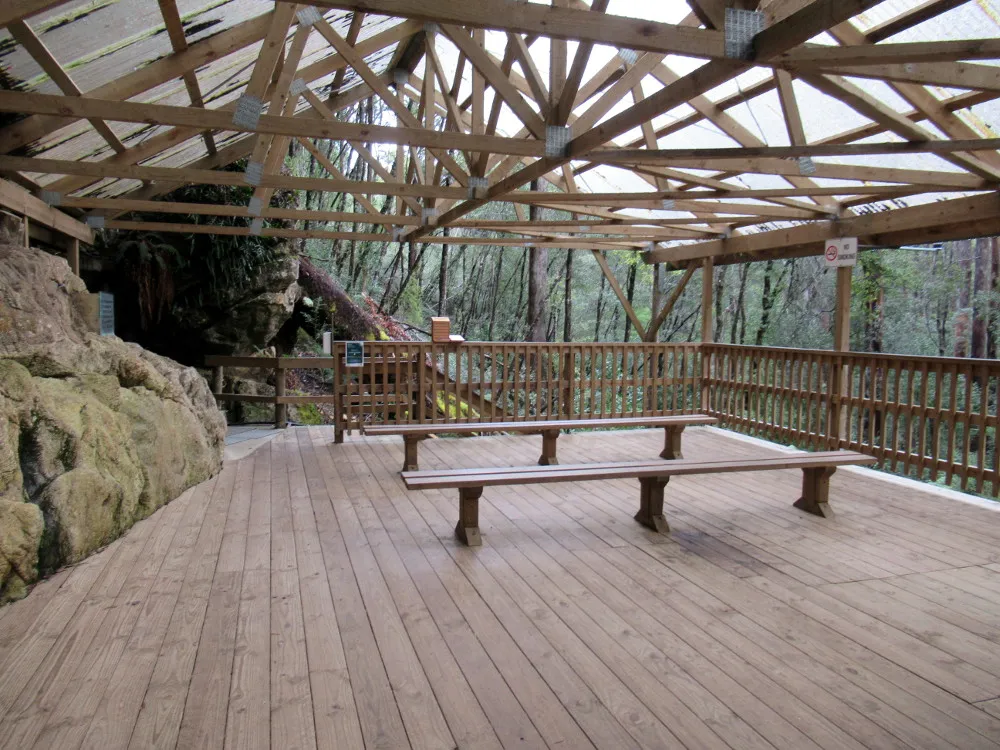
At the end of the walkway, we climbed the stairs to this platform and met our guide. Typically, this area is full of people.

Newdegate Cave officially opened for tours in 1939.
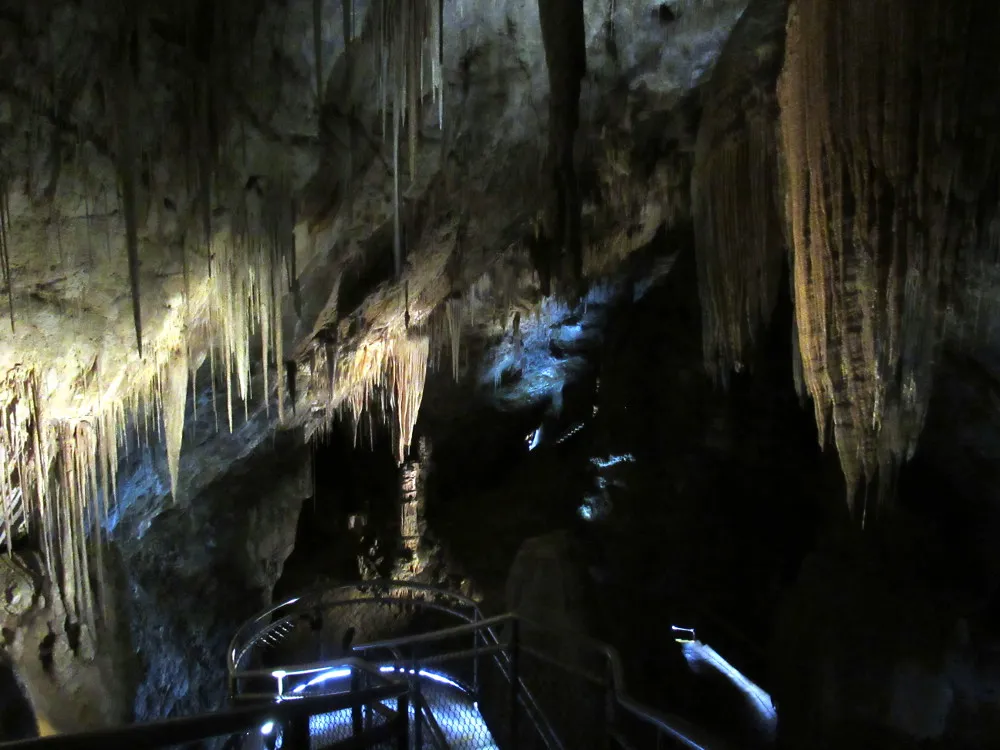
Named after Sir Francis Newdegate, Governor of Tasmania from 1917-1920, Newdegate cave was discovered by tree fellers in 1917. Unlike most caves, formed in limestone, Newdegate is a dolomite cave and the largest one in Australia that is open to the public.

As you walk through the cave, the parks staff light each area. They are conscious of the small creatures that might make the cave their home and are used to total darkness. Lights are turned off again as we pass through. (Incidentally, the cave is well lit but my camera flash wasn't working.)
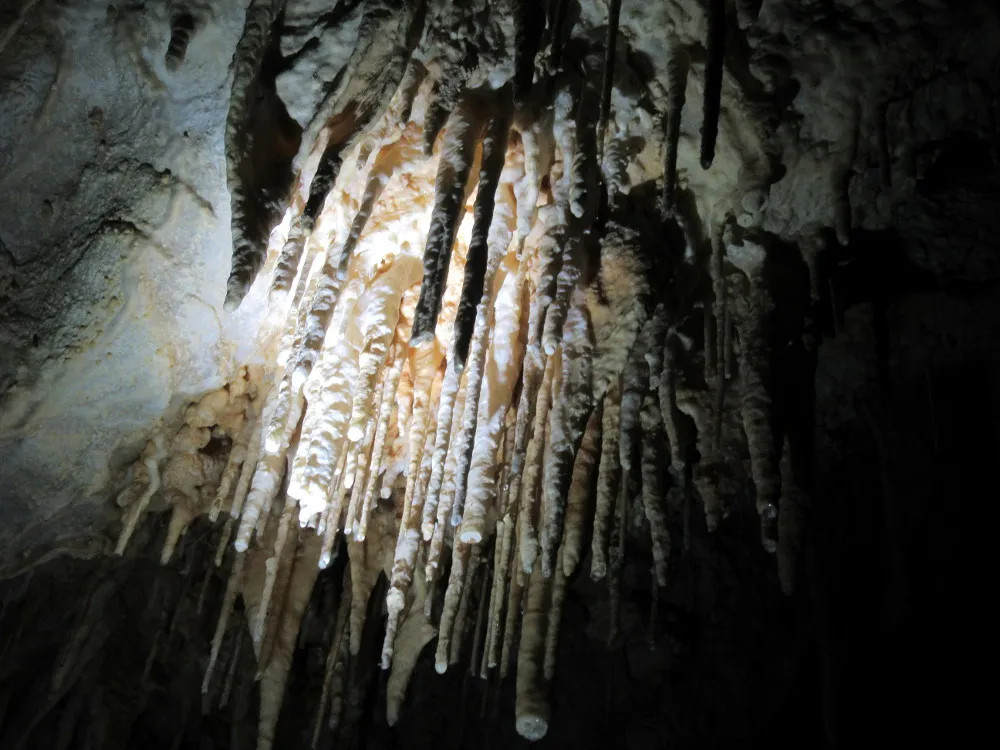
Our guide explained how the cave started to form 40 million years ago.

Stalactites form from the ceiling, stalagmites form below. When they meet, a column can form. I also learned of helictites, a twisty twig-like form of calcium carbonate.
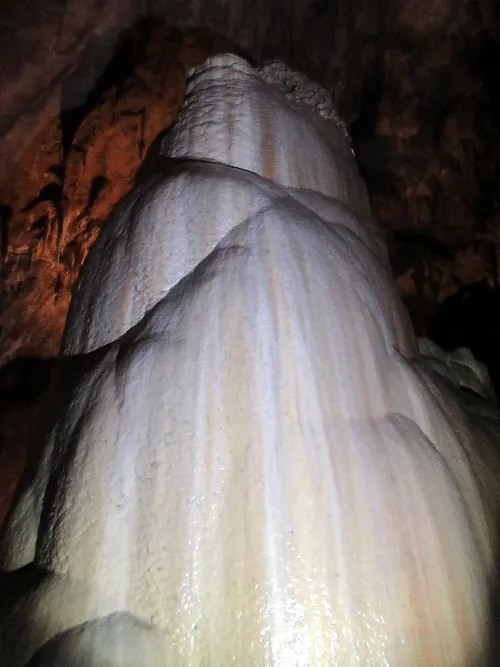
This is flow stone. Newdegate cave is unique in that it was formed in dolomite instead of limestone. While both rocks are formed from carbonate residues, limestone consists mainly of calcite and aragonite from the sediments of marine organisms. Dolomite is made of calcium magnesium carbonate. It is also a sedimentary rock and seems to form under high saline conditions with several steps of dissolution and re-precipitation such that it achieves a more crystalline structure.
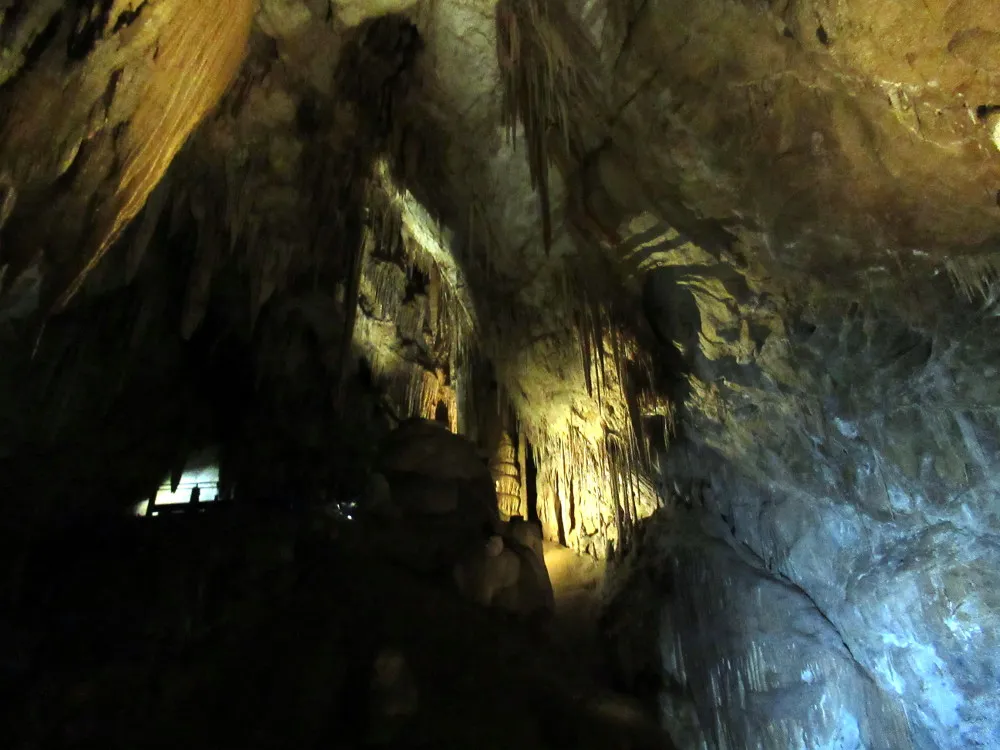
The cave is on many levels and connected by 250 stairs. Here we look up towards a natural balcony.
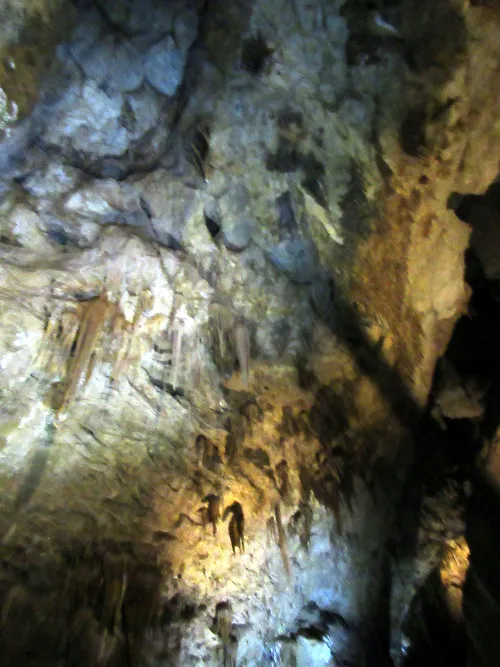
These are helicites. We have room after room of formations, some made from dripping water and others resembling frozen rivers.
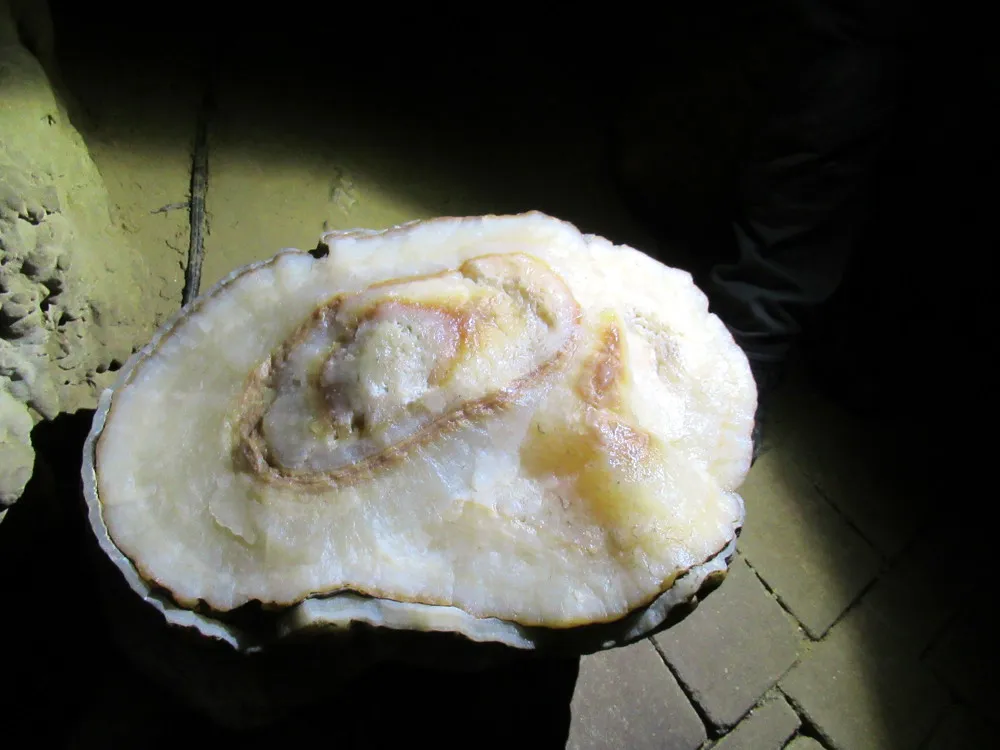
A unique formation that probably fell from the ceiling.
To be continued in part 2/2...
References
Hastings Cave State Reserve (Tasmania Parks)
Hastings Caves State Reserve (official)
Difference between Limestone and Dolomite
Images
Photos by @kansuze using my Canon SX620 HS in Hastings Cave State Reserve, Tasmania, Australia.

Enjoy!
@kansuze
